for string quartet
June 28
Cody, Wyoming, the first afternoon, is dark and overcast. At night, I cannot see the full moon. But today is blue and so bright; the mountains are clear and tremendous. As I walk, I am reminded of other s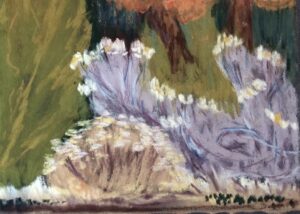 olitary walks and weeping landscapes – green, green, meadows and black grey skies.
olitary walks and weeping landscapes – green, green, meadows and black grey skies.
The new work I am hearing is different. I feel its weight and am reluctant to take up the responsibility. Bleached Thread, Sister Thread, commissioned for the Mendelssohn Quartet, takes the title from one of my sister’s, Eva Davidson, poems. These are old issues; sister bonds, attachments, and delicate fine stuff – a sense of joy and release.
Gratitude reappears in my mind. I find it difficult to accept gifts without payment. So used to a bad turn, a broken heart, it is almost beyond my understanding to accept the gift of returned health without sacrifice. Pain has always defined me. Will gratitude now make me one of them? One of whom?
Opening one’s self to grace.
July 15
I begin to hear. Quietly, and with bursts of light, a song emerges out of rubbing – a soft shuddering
what was gathered or what was learned;
and now you and I will tell each other
what we know, that to be distant
is sometimes closer than to be near. (1)
September 16
The shape of the quartet keeps changing. In this piece, I am guided more by the material than the form. There is a dark black energy in my stomach. Despite the clear, calm weather, the days are unsure.
At first I was conflicted over the work moving a direction I had not planned. But when I viewed the construction with curiosity instead of tension, the work reveals itself. The energy of the music is fierce in its optimism, constantly moving forward and changing. I feel the animation of health restored, of a future fullness refreshed.
Yet, still, still – a disconnection. Despite the celebration, a fracture in my life shows itself. The piece ends in a deep sadness. I cannot control this; I only allow what is.
Excerpted from Let Your Heart Be Broken, Life and Music from a Classical Composer by Tina Davidson. © Tina Davidson, 2022
(1) excerpt from Bleached Thread, Sister Thread, poem by Eva Davidson
In the Garden, pastel by Tina Davidson
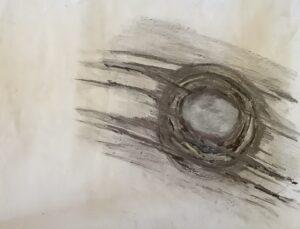 March 31
March 31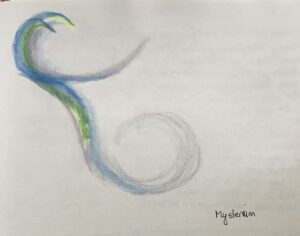
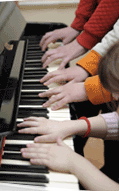 Reading music or symbols, is such a difficult process – the eyes see, the mind decodes and sends a message to the fingers, the ear hears – all the tactile, auditory, sensory abilities working together – and if one those misfires, confusion is overwhelming.
Reading music or symbols, is such a difficult process – the eyes see, the mind decodes and sends a message to the fingers, the ear hears – all the tactile, auditory, sensory abilities working together – and if one those misfires, confusion is overwhelming.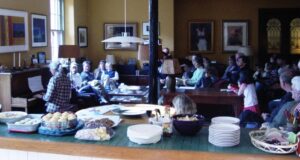 Most importantly, I give them opportunities to experience and claim their own creativity. They are constantly composing music, either at home or in their lesson, notating it as they please. And several times a year, I gather them together in informal settings to perform and celebrate their efforts.
Most importantly, I give them opportunities to experience and claim their own creativity. They are constantly composing music, either at home or in their lesson, notating it as they please. And several times a year, I gather them together in informal settings to perform and celebrate their efforts.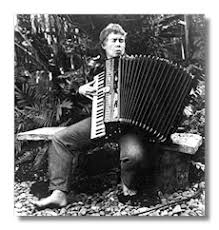 A few days up at the Charles Ives Center for the Performing Arts gives me relief. I am in residence with musician, composer, and maverick
A few days up at the Charles Ives Center for the Performing Arts gives me relief. I am in residence with musician, composer, and maverick 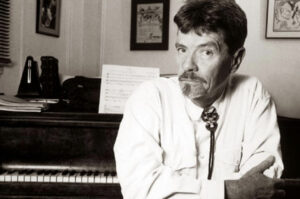 piece is a voyage of technical manipulations involving tape delay and difference tones – those haunting resonances that appear when certain pitches rub against each other.
piece is a voyage of technical manipulations involving tape delay and difference tones – those haunting resonances that appear when certain pitches rub against each other.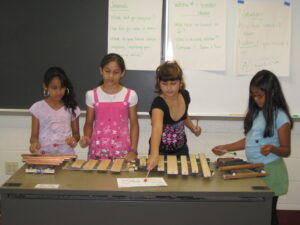 My three-year residency in Delaware is winding down. We sit in meetings and talk about outcomes or measurable results of my work in community settings.
My three-year residency in Delaware is winding down. We sit in meetings and talk about outcomes or measurable results of my work in community settings.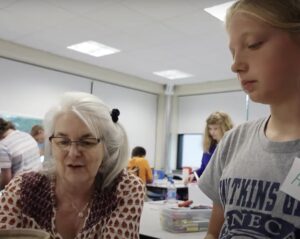 because I trust it will take root in some strange and unimagined way, in its own time. I teach as an act of faith; a spiritual practice. I get up every day, and do it. “Here,” I say, “this is what I have for you today.”
because I trust it will take root in some strange and unimagined way, in its own time. I teach as an act of faith; a spiritual practice. I get up every day, and do it. “Here,” I say, “this is what I have for you today.”